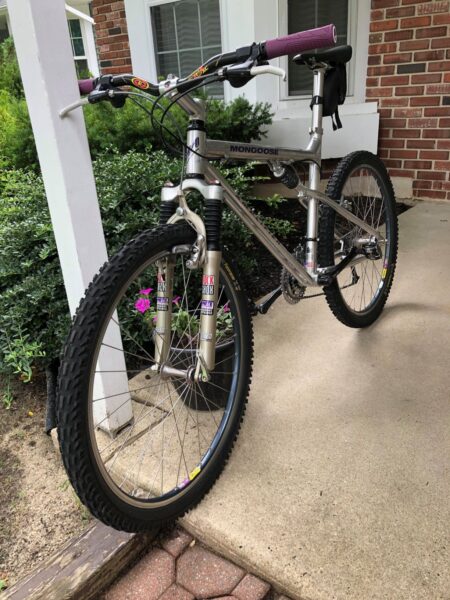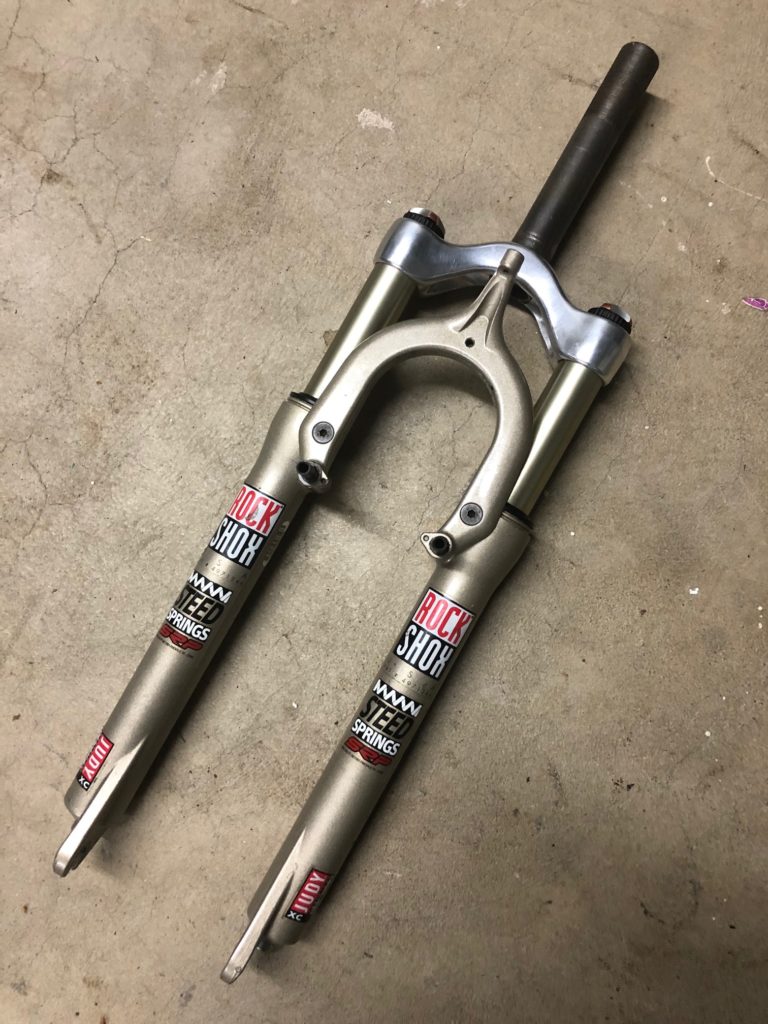Front suspension forks are the unsung heroes of mountain biking, taking on the responsibility of absorbing impacts and providing riders with a smoother and more controlled experience on rough terrains. These crucial elements have gone through significant advancements over time, with continuous technological and design improvements. In this article, we will explore the various components and structure of a typical front suspension fork for mountain bikes. Additionally, we will delve into notable upgrades and renovations that enhance their performance while gaining a deeper understanding of their indispensable role in off road cycling.
Understanding the Key Parts of the Fork
A front suspension fork consists of multiple vital components, each playing a critical role in its overall functionality and performance. Here are the primary parts:
- Crown: The upper section of the fork serves as its connection to the bike’s frame. It houses the steerer tube which is inserted into the bike’s head tube.
- Steerer Tube: A vertical tube extending downward from the crown that attaches to the handlebar stem. It enables riders to steer their bikes effectively.
- Stanchions: These cylindrical tubes are inserted into the lower legs of the fork. Stanchions hold the internal components of the fork and their smooth operation is crucial for proper suspension performance.
- Lower Legs: The lower legs connect to the stanchions and house the fork’s lower bushings and seals. They also have attachment points for mounting the front wheel axle.
- Axle: The front wheel axle secures the wheel to the fork. There are different options available such as quick release and through axle systems, each with their own advantages in terms of stiffness and ease of use.
- Crown Race: The crown race is a small ring that fits on top of the crown, providing a smooth surface for the headset bearings to rotate on.
- Damping System: Modern forks often come equipped with damping systems that control how the fork compresses and rebounds. These systems can be adjusted to fine tune performance based on riding conditions and personal preferences.
- Springs: Forks use either coil springs, elastomers, or air springs to provide compression resistance and support. Springs play a crucial role in determining how responsive and comfortable the fork feels while riding.
- Seals and Bushings: Seals are used to prevent dirt and debris from entering the fork, while bushings facilitate smooth movement between the stanchions and lower legs.
- Brake Mounts: Disc brake mounts are crucial for attaching brake calipers to the fork. Different standards like post mount and IS mount exist, depending on the type of fork and brake.
Construction and Functionality
The design of a front suspension fork is created to withstand the challenges of off road riding while ensuring controlled movement. The lower legs accommodate the stanchions and the steerer tube extends through the crown into the head tube of the frame. Within the fork, springs or air chambers provide resistance when it compresses due to rider weight or trail obstacles.
When encountering bumps or obstacles, the compression mechanism of the fork engages, allowing it to absorb impacts by compressing. If equipped with a damping system, it regulates how quickly the fork compresses and rebounds. This ensures a smoother ride and better traction by keeping the front wheel in contact with the ground.
quickly the fork compresses and rebounds. This ensures a smoother ride and better traction by keeping the front wheel in contact with the ground.
Significant Redesigns and Improvements
Over time, mountain bike front suspension forks have undergone notable advancements. Significant redesigns and improvements have included:
- Transition from Coil to Air Springs: In recent times, there has been a shift in many modern forks from using coil springs to utilizing air springs. The advantage of air springs is that they provide adjustable suspension characteristics, giving riders the ability to fine tune their fork’s performance according to their preferences.
- Adjustable Damping: Damping systems have become more advanced and sophisticated, offering adjustable compression and rebound settings. This means that riders can customize and adjust their fork’s response to better suit different terrains and riding styles.
- Increased Travel: Forks now come with increased travel options, catering to a wider range of riding disciplines, from cross country adventures to intense downhill rides.
- Lightweight Materials: Thanks to advancements in materials like carbon fiber and lightweight alloys, fork constructions have become lighter yet stronger. This allows riders to enjoy the benefits of a robust front suspension while reducing overall weight.
- Thru Axles: Thru axle systems have become the norm in many high performance forks as they enhance stiffness and steering precision. This ensures a more stable and controlled ride experience for riders pushing the limits on challenging terrain.
- Internal Cable Routing: Some forks feature integrated cable routing for brake and shift cables, ensuring tidy organization and secure placement of these essential components.
In conclusion, the front suspension fork on a mountain bike is an intricate but crucial element that significantly enhances rider comfort and control when tackling rough terrains. Understanding its various parts and construction allows riders to truly appreciate the intricacies involved in this essential component of their bike.
Over time, mountain bikers have witnessed significant enhancements and modifications to their forks, making them more adaptable and personalized. With the continuous progress of technology, we can anticipate even more thrilling advancements in front suspension forks that will enhance the thrill of off road riding.
If you’re someone who finds inspiration in the advancements of mountain bike front suspension forks and wants to improve your own riding experience, check out SpecialtyRetroProducts.com. Whether you’re looking for vintage mountain bike parts to revamp a classic ride or need guidance on upgrading your current setup, our team is dedicated to supporting you throughout the process. Dive into our wide range of genuine components and accessories to elevate your mountain biking escapades. Visit SpecialtyRetroProducts.com now and start your quest to enhance your ride.

